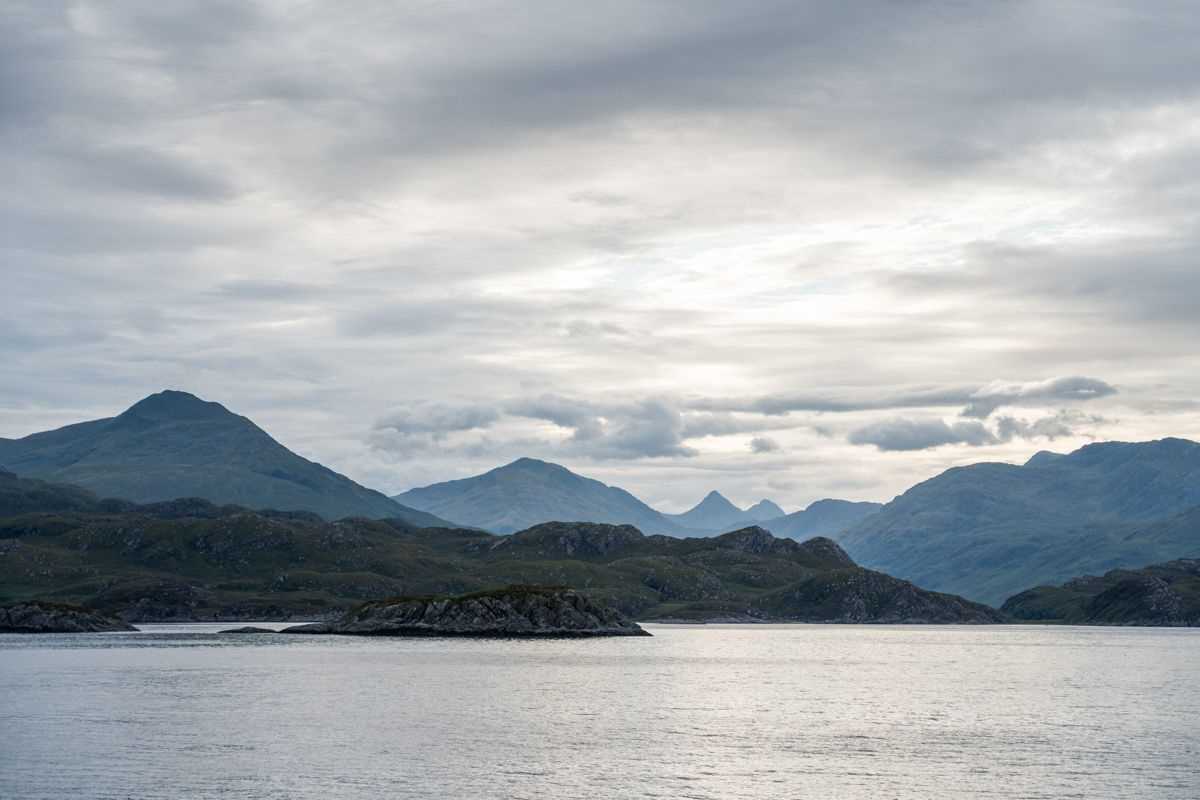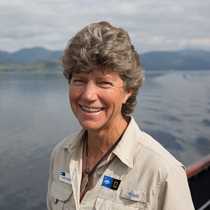This morning we sailed from Inverie to Kyle of Lochalsh, our final destination for the trip. During breakfast we heard the call, “Dolphins!” and we had the joy of watching a large pod of common dolphins cavorting around the ship. At times they swam right alongside, while other times they leapt and dove further out. A spectacular start to the day.
After pulling in at Kyle of Lochalsh, we disembarked and took a coach to Clan Donald Centre on the Sleat Peninsula on the Isle of Skye. The center has an excellent museum with the story of the Lord of the Isles, the line of nobility that developed from a mixed Norse-Gaelic ancestry and ruled over the west coast and islands of Scotland until the 15th century. It also includes lush gardens with diverse flora brought in from across the globe. The ruins of the Armadale Castle stand at the garden’s edge, a remnant of a stately Clan Donald home. Parts of the castle were constructed in the late 18th century, and a larger building was added in 1815, only to burn down in 1855. The castle was renovated and inhabited until the 1920s.
In the afternoon we had the choice between visiting Eilean Donan Castle or hiking in the Cuillin mountains at Skye. Most headed off to tour the castle, a picturesque building perched out on the coast, reputedly the most photographed castle in Scotland. Originally constructed in the mid-13th century, the structure was partially destroyed during a 1719 Jacobite uprising. It lay in ruins until Lieutenant Colonel John MacRae-Gilstrap bought the island and castle in 1911, restoring it to its current state.
Despite the forecast for rain, a smaller group went to hike in the Cuillins of Skye, a rugged mountain range formed during a volcanic period 50-60 million years ago. Our path went up Glen Sligachan in the moorland between the Red Cuillins and the Black Cuillins, named for their rock type: red granite and black gabbro. Both granite and gabbro are intrusive igneous rocks, formed when magma solidified underground. Subsequent erosion through time and the grinding of Ice Age glaciers carved out the mountains we see today. We walked between the high peaks, with views across the heather moorland, and only a bit of drizzle.
The day ended with a celebration of a wonderful week, starting with a viewing of the guest slide show picturing many memorable moments from our trip. Then the Captain’s Farewell Reception, followed by our final dinner together. First course began with a piping in of the haggis, complete with a recitation of Robert Burns’ “Address to the Haggis.” Traditional music played by local musicians on fiddle and concertina ended the day. It’s been a grand week here in the Highlands and Islands. Haste Ye Back!









